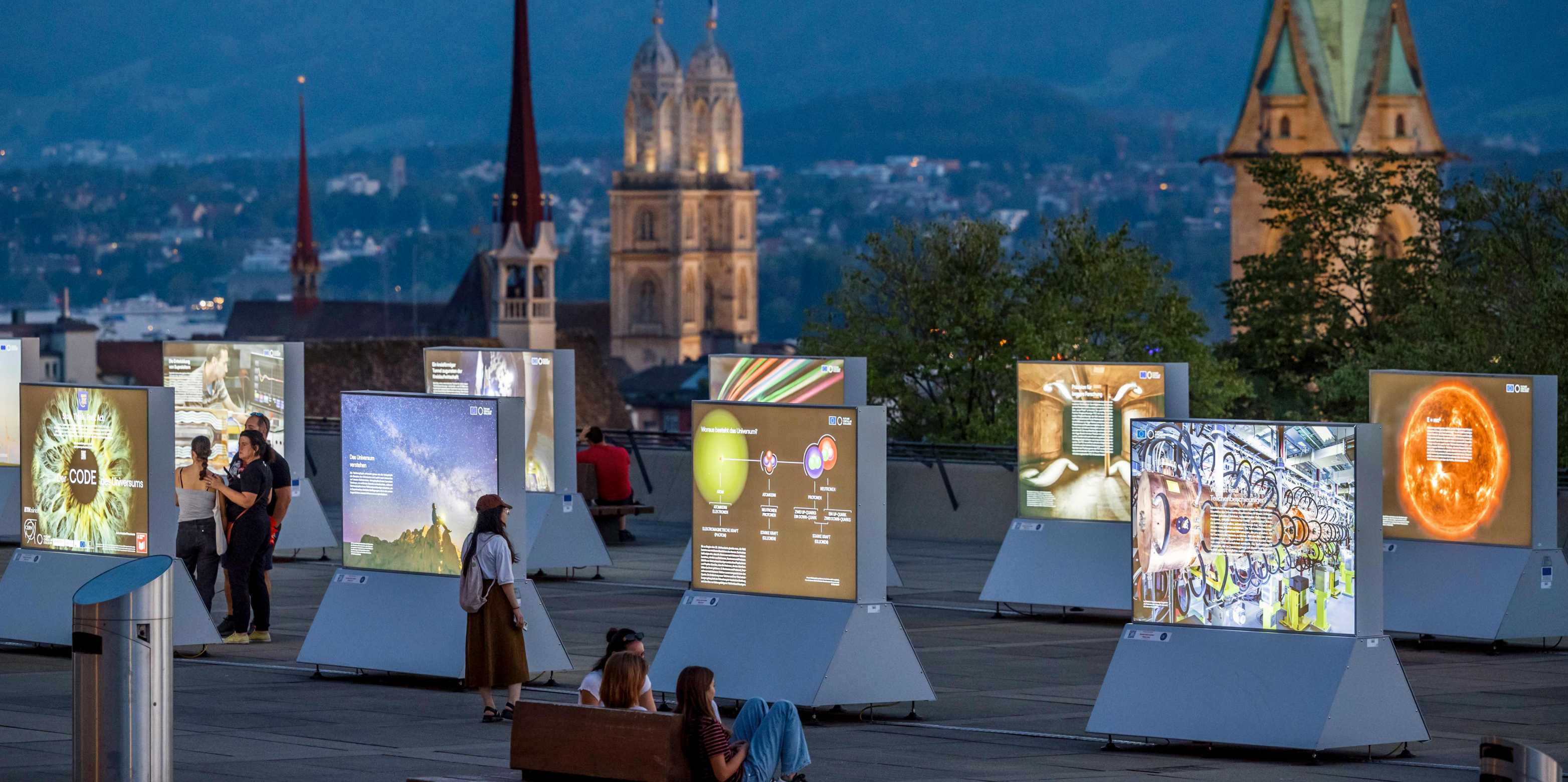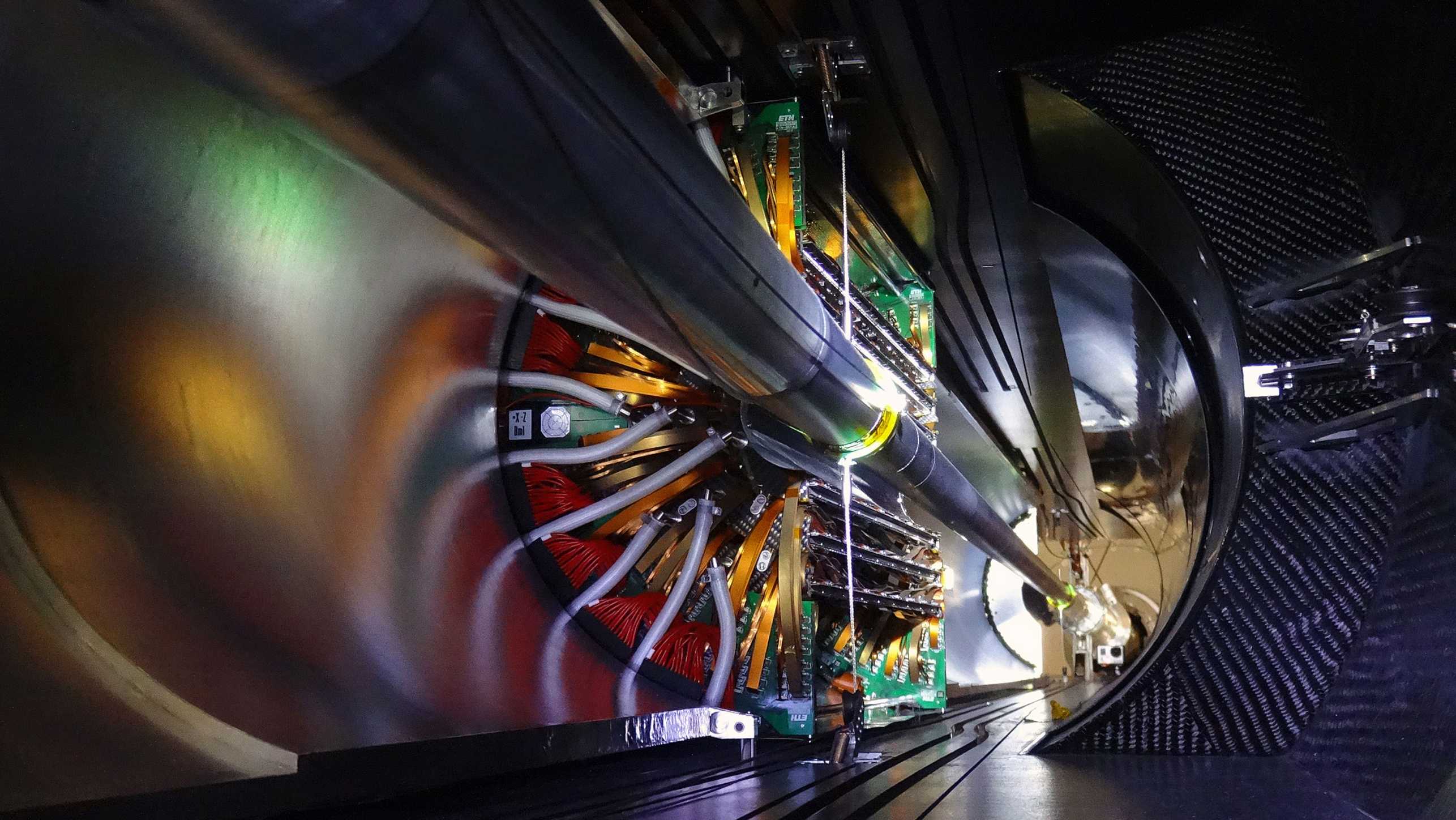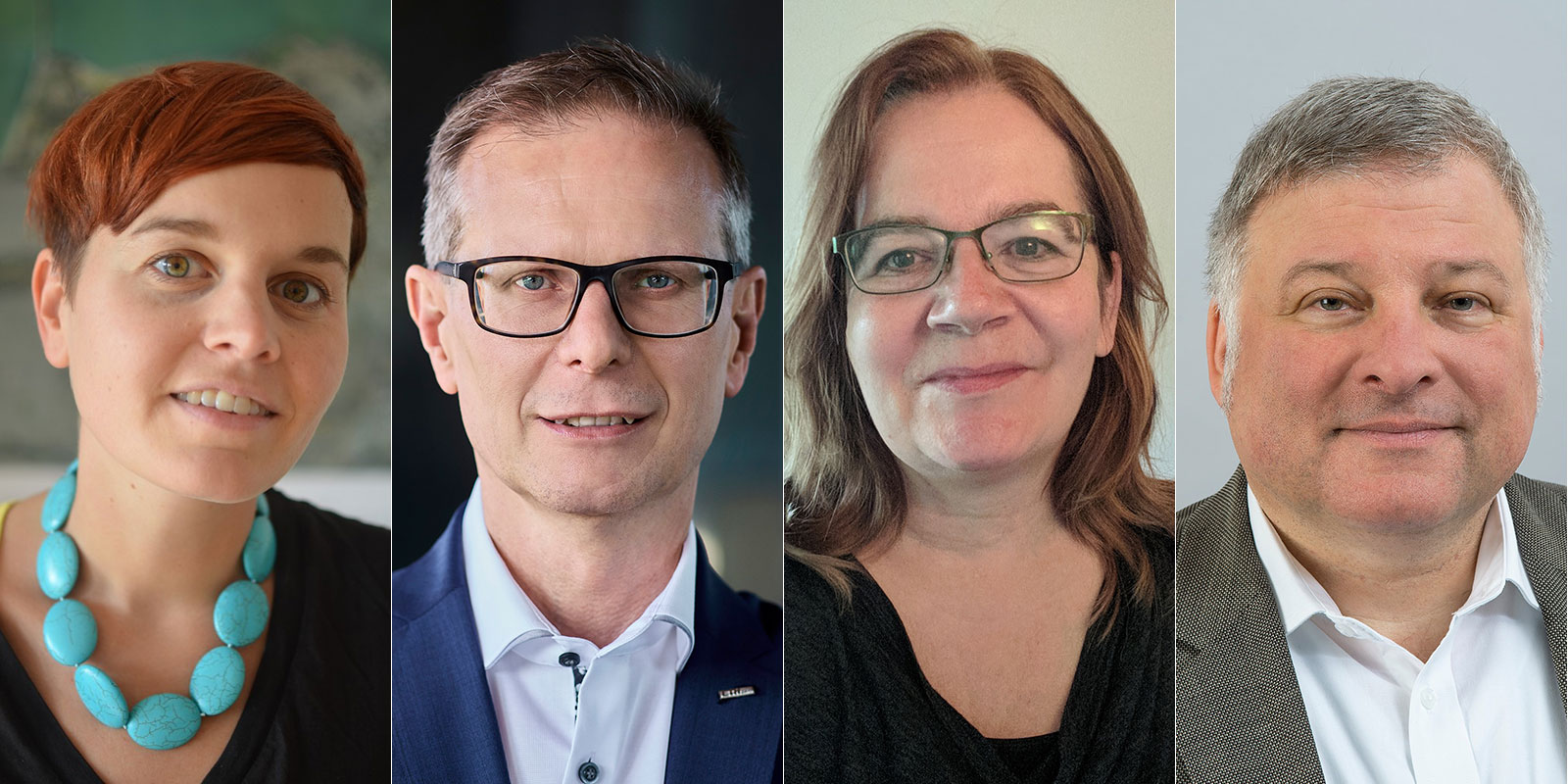The CERN international research centre near Geneva explores the tiniest fragments of the universe. Scientists from ETH Zurich, the University of Zurich and PSI are involved in this. An exhibition, guided tours and a series of lectures at ETH aim to provide a broader public with an understanding of the experiments at the world’s largest particle accelerator.

ETH Rector Günther Dissertori has conducted research at CERN for more than 25 years. “Our major experiments still give me goose pimples,” he said three years ago in an interview. “Our experiments have enabled us to discover the Higgs particle in 2012 and carry out a large number of high-precision measurements. Based on the insights gained from this, we are able among other things to understand better how our universe behaved a few moments after the Big Bang, that is, which particles and forces there were roughly a tenth of a billionth of a second after the Big Bang.”
Physicists such as Günther Dissertori have for decades been exploring the universe and attempting to understand it. A huge task. One of the key aids for this is the Large Hadron Collider (LHC) at CERN. The 27-kilometre-long circular LHC is the world’s largest and most powerful particle accelerator.
Record amount of artificially generated energy
Particle accelerators resemble high-performance microscopes and are the best means for examining the smallest components of the universe. Charged particles, such as electrons or protons, are accelerated at these facilities with the help of electric fields. When they collide, they release energy that in turn gives rise to new particles.
Protons at the LHC collide with energy levels never before achieved in experiments. The researchers use these collisions to examine the structure of the universe. To this end they analyse the underlying components of matter and their interactions. They attempt to provide an answer to fundamental questions: what does the universe consist of? How did it arise? Where does the matter originate?

The data from the CERN research projects are publicly accessible and are analysed at universities and research institutions throughout the world. Hundreds of scientists in Switzerland are involved in the CERN projects, including around 50 at ETH Zurich.
Approachable insight into the experiments
Useful applications for everyday life are constantly being derived from the scientific insights of particle physics. Which these are and how we stand to benefit can currently be discovered at the “Code of the Universe” exhibition on the Polyterrasse. Free guided tours of the exhibition are being offered on four dates.
On top of this, four public lectures between 20 September and 11 October 2023 will address the resolved and unresolved questions of the universe and attempt to provide a broader public with an in-depth insight into the experiments at the world’s largest particle accelerator.

Günther Dissertori will kick off the lecture series on Wednesday 20 September 2023. His talk “What do the Higgs boson and early detection of Alzheimer’s have in common?” aims to construct a bridge between two issues that at first sight do not appear to have anything to do with each other: research of the tiniest particles and a degenerative illness.
Further lectures will be given by Professor Rainer Wallny, Head of the Institute for Particle Physics and Astrophysics, ETH Zurich (28 September), Professor Lea Caminada, Professor of Physics at the University of Zurich and Head of the High-Energy Physics Group at the Paul Scherrer Institute (3 October) and Dr. Katharina Müller, Managing Director Physics-Institute UZH, University of Zurich (11 October).
Events on the topic
Free guided tours of the “Code of the Universe” exhibition on 20 September, 28 September, 3 October and 11 October, starting at 5.45 p.m. on the Polyterrasse.
“Understanding the universe” series of lectures – insights into the experiments at the world’s largest particle accelerator, on 20 September, 28 September, 3 October and 11 October, at 6.30 p.m. in the Main Building HG E3.
external pagePublic guided tour of the exhibition on particle physics at CERN and gravitational waves at the UZH Science Pavilion: 10 October, 5 p.m. and 6.30 p.m., registration via the external pagewebsite.
The “Code of the Universe” exhibition is part of the Open Your Eyes Festival taking place in Zurich until 15 October. Further details of the festival, of which ETH is a scientific partner, can be found here.
Also read the external pageinterview of festival director Lois Lammerhuber with Günther Dissertori.
Always up to date
Would you like to always receive the most important internal information and news from ETH Zurich? Then subscribe to the "internal news" newsletter and visit Staffnet, the information portal for ETH employees.
